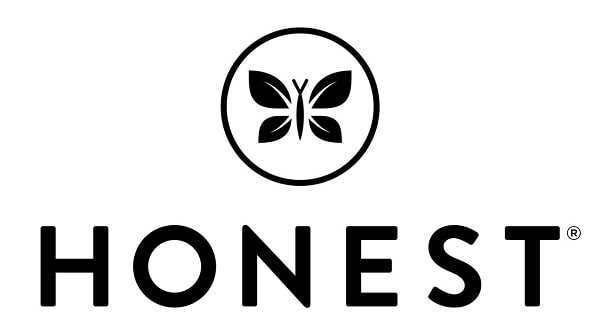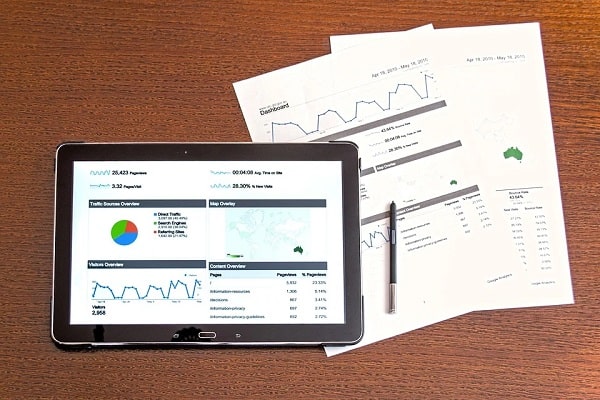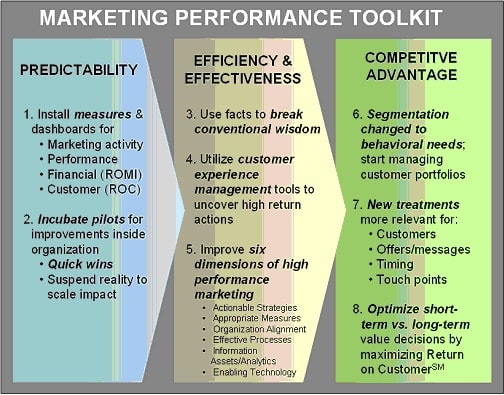If you have been involved in eCommerce for any amount of time, you will already know how frustrating the marketing side can be. With the eCommerce market expected to reach over $5 trillion by the end of 2022, it is a market that continues to grow but which also becomes more competitive. This means you need to get your marketing just right.

With so much competition, just where do you focus your marketing efforts? How much should you embrace marketing automation? Of course, focusing on one area will probably restrict success, but are some types of digital marketing better than others? That will depend greatly on your business type and your target demographics. What works well for one business may not work so well for another.
The keyword for many businesses is ‘budget’. Smaller online businesses and startups do not have the almost limitless budgets that eCommerce behemoths have, so that means they need to spend any budget wisely and ideally on strategies that produce tangible results. This is why many small to medium-sized businesses are turning to a performance marketing strategy.
What is performance marketing?
The main difference between a performance marketing strategy and other types comes down to that crucial factor: money. With a performance marketing strategy, your business only pays for the marketing when you see results. This makes it ideal for a smaller business that is operating on a restrictive budget but still wants to see improved results, more sales, and higher average order values.
Those results could differ according to your agreement with any partner. You decide what results you want, from actual sales to clicks to lead generation. Whichever metric best suits your business model is what you define as a result.
One advantage of AOV marketing is that even when you do not achieve the results you are looking for, you still achieve greater brand awareness, which can be of benefit in the long term. Performance marketers will determine what tactics and channels they feel best suit your brand and produce the best results. Some of the tactics they employ include:
- Affiliate (or partner) marketing
- Social media marketing
- Sponsored adverts
- Search engine marketing
6 ways to improve your performance marketing strategy

So, you can see the attraction of performance marketing; you only pay for actual results rather than seeing your budget drain away with little tangible rewards. But what things should you consider before moving forward?
1. Position your brand

While a performance marketing strategy relies on data, you must have a solid brand position before marketers utilize that data. There is little point in going into a marketing campaign if this has not been focused on first. A good data analyst will be able to help you in this aspect by collecting the necessary data needed for your marketing strategy. Your brand position establishes WHO you are and goes beyond your logo. It should include factors such as identity, vision, and your products.
Good brand positioning is not exclusive to larger companies. Smaller businesses can also establish a strong position, usually based on one of the following strengths:
- Quality: Small businesses often focus on their product or service quality while still offering an affordable price. Offering these factors to customers can make you stand out from larger brands.
- Benefits: One of the oldest marketing positions there is. You would focus on this if you view yourself as unique or offering something different to other brands. A good example of this is Death Wish Coffee, which offers what they claim to be the strongest coffee in the world.
- Problem-solving: Another tried and tested position where you identify a problem that your product or service deals with. For example, Imperfect Foods realized that a lot of food went to waste because it wasn’t visually appealing. They saw a way to position themselves to solve this issue.
- Pricing: Of course, price will always be important to customers. If you can provide a product or service at lower prices than larger competitors without compromising quality, you can establish a strong brand position.
- Value: Can you identify a special value your brand offers? If you have something that stands out from the pack, then that can be a great focus. A good example is Linn Products, which makes high-end audio equipment.
2. Choose your goals

There is little point in employing a performance marketing strategy unless you have clearly defined goals. To identify your particular goals, you should look at previous marketing efforts (if any) and the analytics that resulted from those efforts. Knowing what has worked in the past may be the key to highlighting what you want to achieve in the future.
For example, the creators of the yoga Infinity Strap analyzed the data from their previous marketing campaigns to discover that they were more successful at reaching customers on social media. They chose to focus their attention on Instagram and now make 80% of their sales through the social media platform.
However, goals may be very different from business to business. For example, a SaaS provider may want to focus on lead generation so that their sales team can look to close the sales and increase revenue. One of the first SaaS companies, Salesforce, reached more than $10 billion in revenue within 20 years.
3. Channel choice

What channels do you currently market on, and how successful are they? Being dependent on one or two channels can be a very narrow approach, and a slight change in circumstances can damage your goals and business. Your marketing efforts should ideally be spread across several channels while also recognizing which channels potential customers will use.
For example, LinkedIn is a channel that may offer some exposure for particular products. SaaS and other ‘as a service’ products can be marketed well on this channel as there are a lot of c-suite executives and decision-makers who will see adverts and marketing efforts. Trying to market SaaS via a channel like TikTok is unlikely to reap any rewards due to demographics.
On the other hand, clothing and accessory brands, like watch brand Cluse, are much more suited to advertising on Instagram, where they are more likely to reach their target demographic and attract new customers. Here they focus on telling the story of their brand and forming a more personal connection with their followers.

4. Suitable partners

Choosing suitable partners is one of the foundations of a good performance marketing strategy. These partners come in various forms, including professional marketers, bloggers, and influencers. Choosing the right partner and strategy can really boost your reach and grow your brand.
This can be seen with Honest, a company that specializes in sustainable beauty, home, and baby products. They choose to partner with beauty and parenting influencers to create content aimed at their target audience. However, while this works great for them, there is no point in partnering with a cosmetics influencer when you are offering tech products.
As well as their knowledge base, you also want to consider their reach. If you want to reach your defined goals, that usually means reaching the widest audience possible though some niche products may be an exception to that rule.
For example, if you sell specialist tech products, a relevant blog with a focused audience can help achieve your goals.
5. Analyze

If you are going to use a performance marketing strategy, then not only do you need clearly defined goals but also a clear process of how you will measure success. You may have one focused goal, such as improved lead generation, but you will also look at a number of key metrics that let you see how any strategy is performing and can highlight areas that need to be changed or tweaked.
The metrics that matter most to you will depend on your performance marketing format. Some of the most common areas and metrics are:
- Digital marketing: CTR (click-through rates) and CPA (costs per action)
- Social media: followers, engagement rate, reach
- Content marketing: blog subscribers, shared or downloaded content, qualified leads.
- Email marketing: opened emails, unsubscribes
- Website: unique visitors, new and returning customers, bounce rate, time on site, conversions. A major contributor to this is having good landing pages that help maximize those metrics. For example, nonprofit Momentous Institute used heat mapping to optimize its landing page and decrease the exit rate by 3.5%.
- Channels: comparable metrics such as total revenue per channel.
- SERPs and SEO: search engine rankings, keyword average ranking or search volume.
- Feedback & Reviews: NPS (net promoter score), peer reviews, social media mentions.
6. Avoid a vacuum

While a performance marketing strategy is a great solution, especially for new or smaller businesses, you mustn’t let your efforts in this area operate in a vacuum. It is easy to manage your performance marketing when you have a small number of partners. But as your work in this area grows and expands, you must manage all partners effectively.
Identifying which partners operate efficiently is important to you in the short and long term. If a partner is not producing the results you want, even when not costing you much, there is little point in continuing with them. What you are looking for is strategies that lead to achieving goals.
Consider having a team member responsible for overseeing all your performance marketing efforts. Continue to monitor analytics, and don’t be afraid to take things in a new direction. For example, travel company Costa Rican Vacations changed its approach when looking at its clients and increased its site’s conversion rate by 40%.
Related Content
- 14 Best eCommerce Marketing Tips & Strategies to Boost Sales
- 10 eCommerce Marketing Experts Share Their Top Growth Strategy
- 5 Ways to Maximize eCommerce Sales in 2022 through Automation
The Takeaway

A performance marketing strategy offers great opportunities to smaller businesses. It is a way of expanding your reach and brand awareness and improving sales figures without eating into what may well be a limited budget. However, you must approach this method carefully and cautiously to get it right.
Establish your brand position before you do anything else; it tells people who you are and what you offer. Then set out your goals; some companies may just want improved sales figures while others may want better-qualified leads. Consider the channels you will use and the partners you will work with. Both of these will be dictated by what you sell and what your target demographics are.
Once you have a framework, think about how you will measure success and which metrics or KPIs you will analyze. It is also worth considering how you will manage your performance marketing and how often you will review the strategies in place. You should be ready to embark on a successful performance marketing strategy campaign by following these steps.
___

Written by our guest writer Patty, the EMEA Product Marketing Manager for RingCentral Office, the leader in cloud communications solutions with integrated features for seamless live chats and customer service.
Patty is passionate about creating value and differentiation, ensuring a better experience for customers and partners. She gained a wealth of international product marketing, product management, GTM and market development experience, across a range of high-tech SaaS in a fast-paced, hyper-growth environment that assumes both strategic and tactical execution. She is not new to UC, starting in Tandberg, then Cisco, driving the launch of video collaboration and services, and Enghouse with global responsibilities for hosted CCaaS. She has written for sites like MGID and Storyblok.

